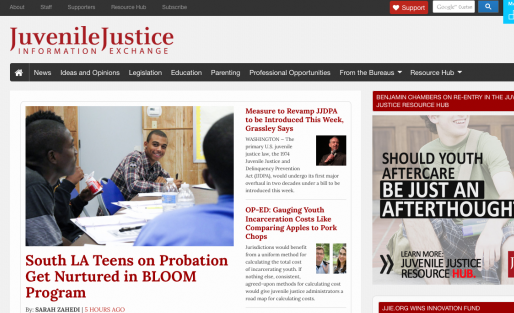I recently wrote a grant proposal for the INNovation Fund at the Institute for Nonprofit News requesting funding for a membership program for the Juvenile Justice Information Exchange, a digital publication focused on juvenile justice and child welfare issues. The odds of winning a challenge grant are always slim. So, let’s be honest, winning is always a surprise (it definitely was for us). With that surprise comes a big dose of reality: “Hey, we have to do this and we have to start now!”
Let me first be quite frank: I am not a journalist. I did not go to school for journalism nor have I, until now, ever been associated with a news publication, whether for-profit or nonprofit. I do, however, have a knack and a passion for fundraising for organizations I feel are necessary and effective.
This job’s description, as any development professional knows, is a little rough around the edges. The monetary goals set and the abundance of avenues one can choose to meet them can be overwhelming, especially in a growing, entrepreneurial newsroom. Add the negative connotations surrounding juvenile justice and you’ve got several obstacles to overcome.
Fortunately, I have a flourishing community to draw ideas from, including the immensely successful Texas Tribune which launched its own membership program. That program earned $668,642 in membership revenue in 2013, a 31 percent jump over the previous year, according to a report by Jake Batsell for the John S. and James L. Knight Foundation.
The model they use is one where the members receive some kind of service rather than a practical good. Natalie Choate, the Tribune’s director of media relations and partnerships, was formerly the assistant director for consumer revenue and memberships. Based on that experience, she says, “Members give because they believe in you, not because they want a water bottle.” This idea resonated with me, and I thought: Let’s create a program that benefits our constituents and us, while also learning even more about our audience’s needs.
So let’s take it a step further: What else can we provide our loyal audience members as an incentive to make them invest monetarily?
First, we will take a look at our inner workings, surveying our audience through our weekly newsletter, social media platforms, and the publication itself. This survey will be used to identify the top four issues our audience cares about most. Examples of the many subsets under the umbrella of juvenile justice are mental health, substance abuse, racial inequality, LGBTQ, girls, or foster care issues.
Part of the JJIE.org’s mission is to increase understanding and encourage dialogue regarding youth justice and child welfare issues among policymakers, practitioners, academics, advocates, parents, and youth themselves. To further encourage dialogue around issues our audience members care so deeply about, they will have the option of choosing membership levels tied to their individual financial capabilities and interests.
Like other membership programs, each benefit package will be associated with a monetary value. Every member in each subgroup will receive a monthly topical newsletter tailored to the member’s specific interest area. The next level will include quarterly high-profile thought leader discussions, and the top level will also receive two annual webinars.
Not only will this program be created directly from audience feedback, but we will be sure to consistently interact with our new members during the entire process. They will have multiple opportunities to provide us with thoughts on what is or is not working for them and how we can improve their experience for the next year to make sure the membership interaction does not slow down after the initial commitment.
If this program is successful, it will create invested and engaged audience members who we can use as a foundation to build more audience members in the future.
Over the years, so many foundations, such as the Knight Foundation that supports this endeavor, and their grantees have developed a body of knowledge that we have learned so much from.
Now it is our turn to build on that body of knowledge so others can learn from our membership project. It’s an example of the nonprofit news community providing the information and support necessary to adapt, foster, and improve upon ideas that help create sustainable business models for newsrooms everywhere.
Erica Honeycutt is the assistant grant writer at the Center for Sustainable Journalism where she manages foundation relations, helps write proposals, and is creating a membership program for the JJIE.org. She is a member of the Association of Fundraising Professionals where she was recently selected as a 2015 Diversity Fellow and volunteers as member of the Finance and Fundraising Committee for the Young Nonprofit Professionals Network. She is a graduate of the University of North Carolina at Greensboro and holds a Bachelor’s degree in Acting.




Great piece, Erica. Thanks for challenging us to think differently.
Great piece, Erica. Thanks for challenging us to think differently.